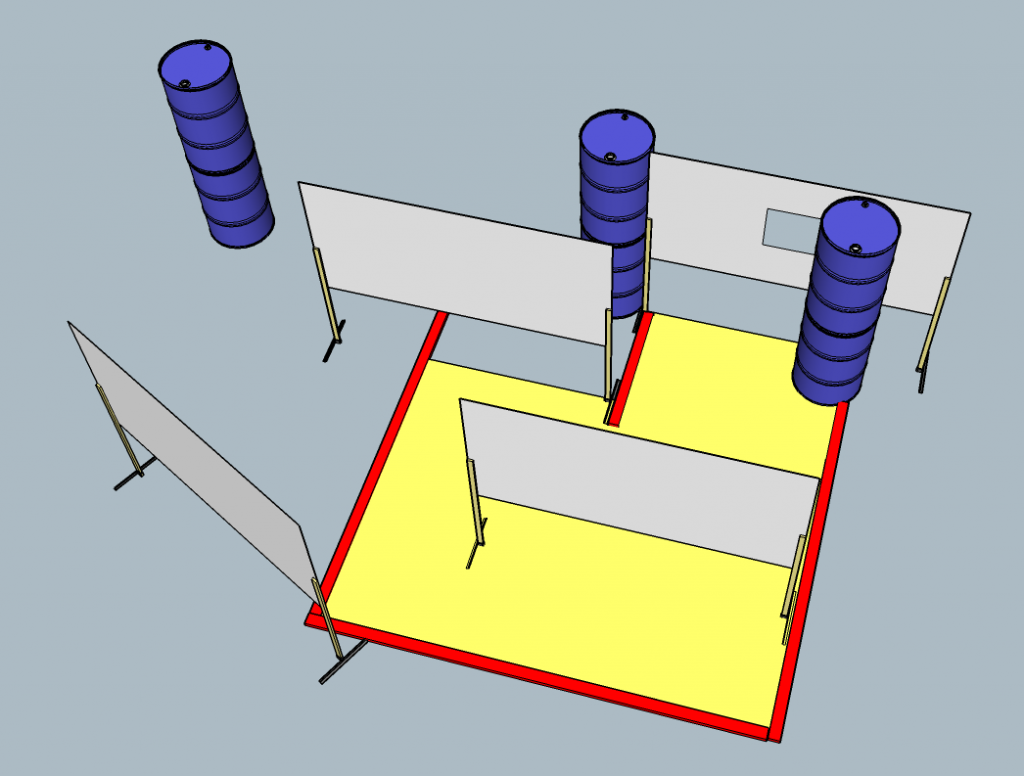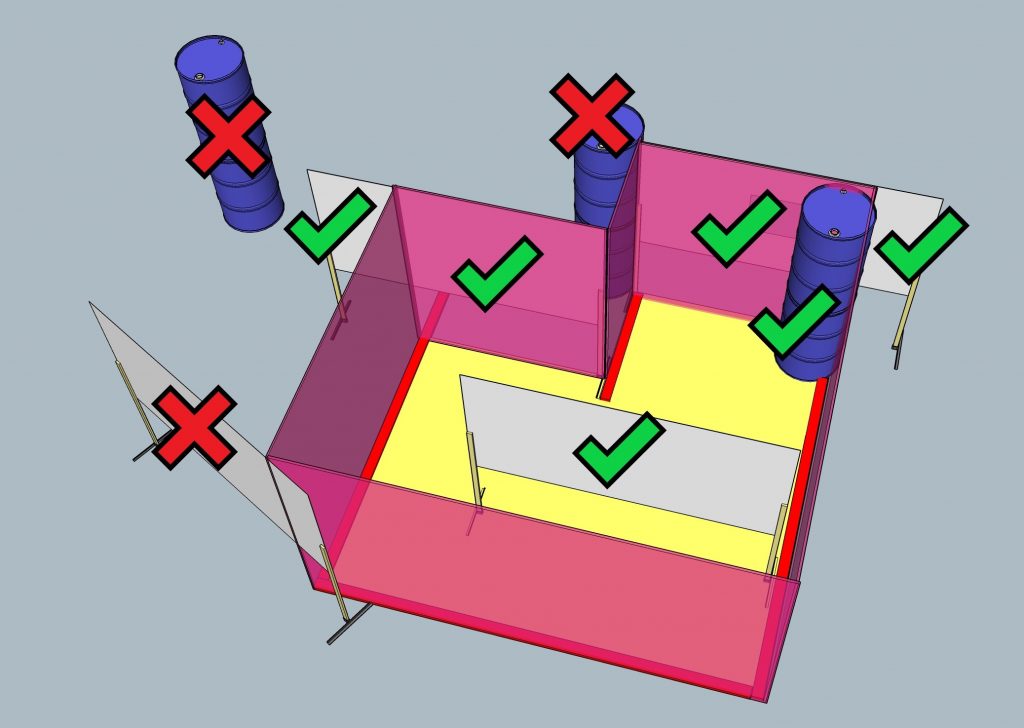Note: This post was originally published in July 2019 to explain the edits to 10.2.1 in the 2019 USPSA Competition Rules. 10.2.1 was revised again in the 2020 USPSA Competition Rules and this post has been updated to reflect the 2020 change.
No, we aren’t talking about tech support. We are talking about fault penalties because the recent changes for rule 10.2.1 have caused some confusion. What is part of the shooting area? What constitutes gaining support? That rule covers a lot, and can be confusing. So, let’s break it down.
10.2.1 is commonly known as the “foot fault” rule and it covers the penalties for firing shots while touching the ground outside the shooting area or by gaining support on a object outside the shooting area. Foot faults for touching the ground outside the shooting area are straight forward. It’s a per occurrence penalty unless the shooter has left the shooting area and both feet are outside the fault lines or if there is significant advantage, then it’s per shot.
Most of the 10.2.1 related questions we are seeing are in regards to what constitutes gaining support from objects outside the shooting area. Per the current rule, if objects are partially inside the shooting area, then the entire object (even the parts outside the shooting area) can be used for support. However, any support structures such as wall feet or braces, cannot be used for support.
As an example, if there is a wall that is partially inside the shooting area, gaining support on the wall that is outside the shooting area is acceptable, but using the supporting structure of the wall (feet, braces) is not allowed. Additionally, objects that are completely outside the shooting area, and touch objects that are partially inside the shooting area cannot be used for support.
Here is the picture of a stage. The shooting area has been highlighted in yellow. Notice that the shooting area ends under walls since walls are considered to be solid planes that extend to the ground (rule 2.2.3) and anything on the other side of the wall is out-of-bounds. The fault lines on the edge of the shooting area are part of the shooting area, but part of the fault line that extends through the wall is outside the shooting area. And no, you can’t give a shooter a foot fault penalty for having their toes through an imaginary wall. And since the new 10.2.1 and 2.2.3.5 also state that wall supports are non-existent and can’t be used for support, if a wall support touches a fault line, that doesn’t mean that the wall touches the fault line because the wall support doesn’t exist.

The walls and barrels that are part of, completely inside, or partially inside the shooting area can be used for support without penalty, but items completely outside the shooting area can’t. In the picture below, the shooting area boundaries are indicated by a pink plane. The walls high-lighted in pink can be used for support, including the parts of those walls that are outside the shooting area. Objects completely outside the shooting area cannot be used for support.

So what about contact versus support on objects and walls completely outside the shooting area? For foot faults, making contact with the ground or platform outside of a shooting area is penalized. But, when talking about objects it says standing on or gaining support. It is easy to determine if a competitor is standing on an object outside the shooting area, but gaining support is sometimes tricky to determine.
We have been asked by many PCC shooters about this penalty. A lot of times, there are tight corners or slots between walls that require PCC shooters to lean quite a bit further than a handgun shooter and as a result, the PCC shooters might brush against walls or objects completely outside the shooting area. ROs need to observe if they are gaining support or just touching the walls because it’s a tight space. Would the shooter be able to stand if the walls/objects completely outside the shooting area weren’t there? If the answer is yes, then they are not gaining support and should not be penalized.